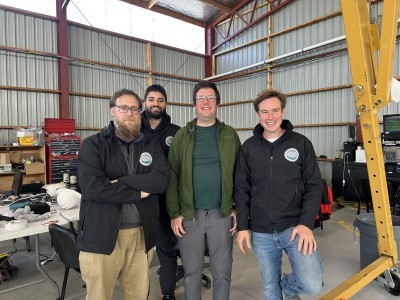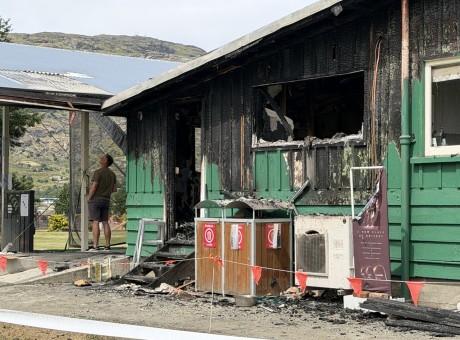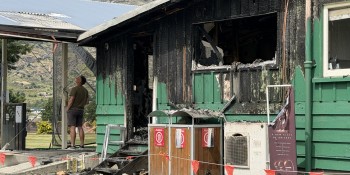NASA’s successful Wānaka launch: No concerns over military spy balloon incidents

NASA managed to pull off a perfect scientific balloon launch from Wānaka this morning telling Crux that there are no concerns relating to the recent military targeting of similar balloons in rising tensions between the US and China.

The SuperBIT telescope payload from Princeton University at the Wānaka launch site. Image: NASA
NASA Spokesperson Jeremy Eggers told Crux today that the massive Super Pressure Balloon Imaging Telescope (SuperBIT) launched today gathered only information that was shared openly with the balloon itself being tracked in collaboration with all of the national aviation authorities of the countries being overflown.
He told Crux “Science and technical data collected on NASA missions is open source/available to all.”
SuperBIT is a Princeton University payload which NASA’s Balloon Program Office chief Debbie Fairbrother says has the potential to revolutionise space exploration from within the earth’s atmosphere.
“We are excited to be back in Wānaka for two planned balloon missions set to qualify this game-changing technology that enables long-duration flight in a near-space environment for the science community.”
The SuperBIT telescope uses a wide field of view to image large galaxy clusters from a balloon platform in a near-space environment. By measuring the way these massive objects warp the space around them, also called “weak gravitational lensing,” SuperBIT will be able to map the dark matter present in these clusters. The previous Wānaka launches did not have the telescope.
Astronomer on the project, Richard Massey explained the SuperBIT telescope in simpler terms, telling Crux that they're "gonna find out what the universe is made of" with the telescope.

Richard Massey (far right) and some more of the SuperBIT team in the hangar post-launch, from left: Steven Benton, David Lagattuta and Embed Paracha.
"We're going to map all the stars and all the galaxies you can see, and all the stuff you can't see [the dark matter] - there's lots in the universe that's invisible."
Launching on the first attempt like the balloon did today "never happens", Mr Massey says, and it's been an exciting day after so long spent on the project.
"I devoted a decade of my life to this thing and it's now on its way into space."
Mr Massey's hopeful that the balloon will stay up for three months and says in that time, it will circumvent the globe every two or three weeks.
Now he's off to bed, he says, as he's been up since the following evening preparing for this launch.
The second Wānaka mission will fly the Extreme Universe Space Observatory 2 (EUSO-2), a mission from the University of Chicago that aims to build on data collected during a 2017 mission. EUSO-2 will detect ultra-high energy cosmic-ray particles from beyond our galaxy as they penetrate Earth’s atmosphere. The origins of these particles are not well known, so the data collected from EUSO-2 will help solve this science mystery.
The main purpose of today’s flight is to test super balloon technology. NASA hopes that eventually these balloons to stay up for 100 days, but thus far, no balloon’s lasted this long.
To date, the longest flight duration from a super pressure balloon launched from New Zealand is 46 days, 20 hours, and 19 hours.
Despite recent events in the US – in February a Chinese balloon was caught flying over Motana, and The Pengaton (US Department of Defense) still maintains it was used for surveillance purposes – NASA's associate chief of communications Jeremy Eggers tells Crux that NASA has no concerns about this balloon being mistaken for spyware or shot down.
NASA's goal is to have a long-duration flight and, when the mission is complete, terminate over land so we can recover the balloon payload and balloon film.
The balloon is made from a plastic film called polyethylene, it’s a similar thickness to a plastic sandwich wrap and it takes three months to make.
NASA has shared that the balloon film is not reusable, but their goal is to terminate the balloon over land, so the balloon film and its carrying payload can be recovered.
The ideal location for the balloons descent is Argentina.
The desired flight path for the balloon is for it lift off in the direction and fly between Oamaru and Timaru.
Previously the 2015, 2016, 2017 successful attempts the balloons have landed in rural Southern Queensland, Peru and another one landed in the ocean
You can track the Wānaka balloon here.

























